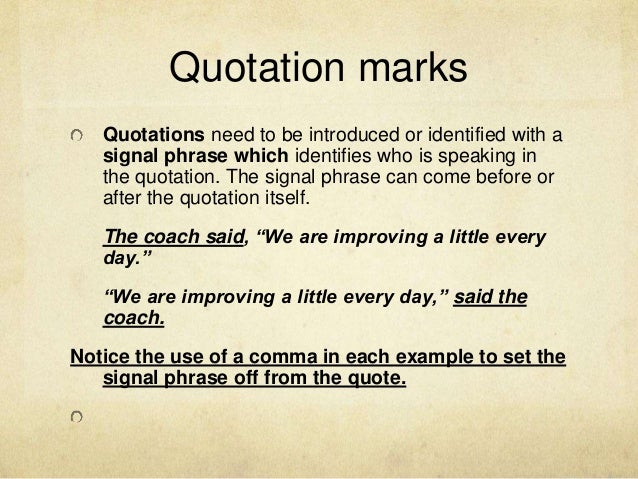Quotes Vs Italics
As for enclosing titles in quotation marks or italicizing them, you can get pretty far by following the “Big/heavy equals italics” (like books) and “Small/light equals quotes” (like poems) generalizations, but Associated Press style doesn’t italicize nothin’ and Chicago style has layers of specificity and if-then statements. Quotation Marks and Italics handout 4 For the sake of appearance, put all commas or periods inside quotation marks. Other punctuation goes inside quotation marks only when it is actually part of the quoted matter. 'Well,' he said, 'I'm ready for the samples.' 'If you insist,' I said.
This page addresses when to use italics, when to avoid italics, how to use italics for emphasis, and when to use reverse italics. Additional cases and examples are provided in the Publication Manual; users’ most common questions are addressed here.
Italics and reverse italics are covered in Sections 6.22 and 6.23 of the APA Publication Manual, Seventh Edition
When to Use Italics
In APA Style papers, use italics for the following cases:
| Case | Example |
|---|---|
First use of key terms or phrases, often accompanied by a definition | Mindfulness is defined as “the act of noticing new things, a process that promotes flexible responding to the demands of the environment” (Pagnini et al., 2016, p. 91). |
Titles of books, reports, webpages, and other stand-alone works | Assessment and treatment of older adults: A guide for mental health professionals |
Titles of periodicals and periodical volume numbers (but not the comma between them) | American Journal of Nursing, 119(9), 47–53. |
English letters used as statistical symbols or algebraic variables | M, SD, t, Cohen’s d |
Anchors of a scale (but not the associated number) | ranged from 1 (poor) to 5 (excellent) a Likert scale (1 = strongly disagree to 5 = strongly agree) |
First use of words, phrases, or abbreviations from another language when readers may not be familiar with them; however, if the term appears in a dictionary for the language in which you are writing, do not italicize it | Their favorite term of endearment was mon petit chou. |

When Not to Use Italics
Do not use italics for the following cases in APA Style papers:
| Case | Example |
|---|---|
Titles of book series | the Harry Potter series |
The punctuation mark after an italicized word or phrase or between elements of a reference list entry (e.g., the comma after a periodical title or issue number, the period after a book title) | Journal of Abnormal Psychology, 128(6), 510–516. |
Words, phrases, and abbreviations of foreign origin that appear in a dictionary for the language in which you are writing | a posteriori |
Italics for Emphasis

In general, avoid using italics for emphasis. Instead, rewrite your sentence to provide emphasis. For example, place important words or phrases at the beginning or end of a sentence instead of in the middle, or break long sentences into several shorter sentences.
However, do use italics if emphasis might otherwise be lost or the material might be misread, as in the following example.
Whereas creative self-efficacy typically focuses on confidence beliefs prior to engaging in creative endeavors, perceived creative credit focuses on the beliefs developed after engaging in creative tasks (Ng & Yam, 2019, p. 1146).
If you add emphasis to a direct quotation, place the words “[emphasis added]” in square brackets after the words you have italicized.

Research on creativity indicates that “promoting creativity without attending to the subsequent psychological and behavioral changes decreases rather than increases [emphasis added] organizational performance over the long run” (Ng & Yam, 2019, p. 1157).
Reverse Italics
When words that would normally be italicized appear within text that is already italicized, those words should be set in standard (nonitalic) type, referred to as reverse italicization. For example, if an italic symbol appears in a table title (which is also italicized), use standard type for the symbol.
Quotes Versus Italics
Demographic Characteristics of Study Participants(N= 250)